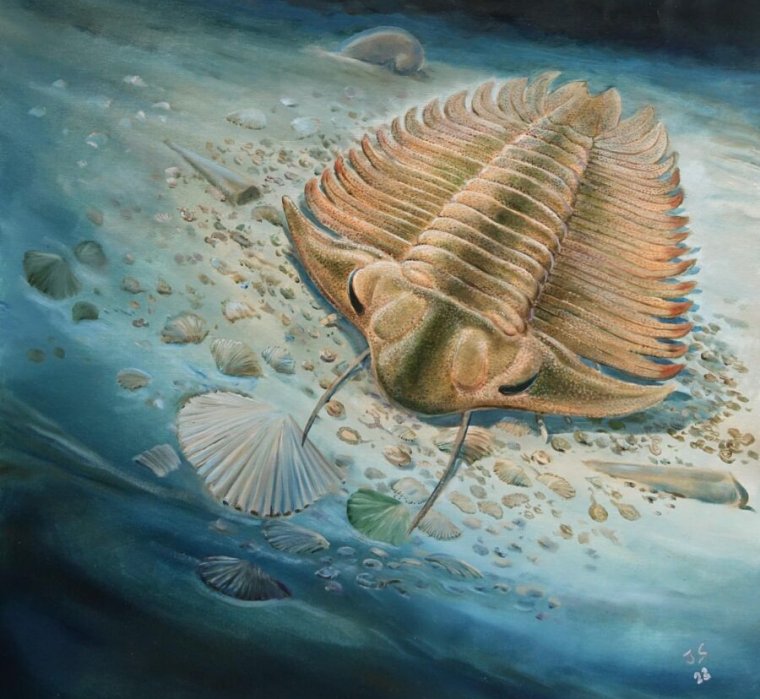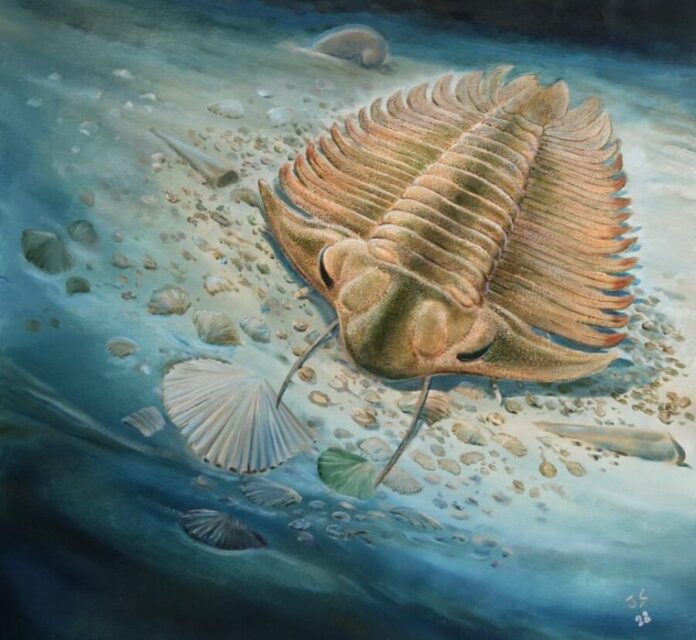
Enlarge (credit: Jiri Svoboda)
Trilobites first appear early in the Cambrian and are one of the earliest examples of arthropods, the group that includes all insects. They flourished for over 100 million years, leaving fossils that are seemingly ubiquitous—we've described over 20,000 different trilobite species. That's over three times the number of mammalian species we're aware of.
Despite all those fossils, however, we've never found one with a meal inside it. We've been able to infer what some of them were likely to have been dining on based on their appearance and the ecosystems they were found in, but we haven't been able to establish what they ate with certainty. But today, researchers are describing an exquisitely preserved sample that includes several of the animal's last meals, which suggests that this particular animal was a bit like an aquatic vacuum cleaner.
The last several suppers
The fossil comes from shale deposits found in the Prague Basin of the Czech Republic. Those rocks date from the Ordovician, which came immediately after the Cambrian and lasted until about 450 million years ago. Mixed in among the layers of shale here are harder silicate nodules that have been termed "Rokycany Balls." When these nodules contain fossils, they tend to be well-preserved and provide three-dimensional details of the long-dead organisms.
Read 10 remaining paragraphs | Comments
Ars Technica - All contentContinue reading/original-link]




